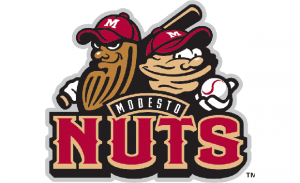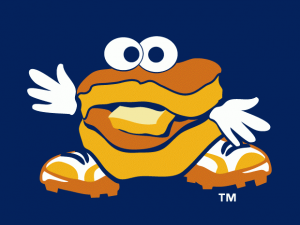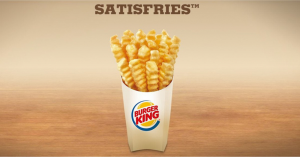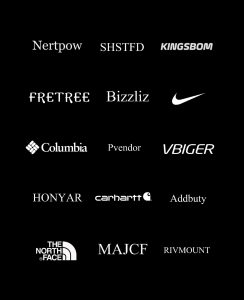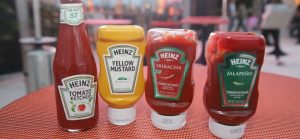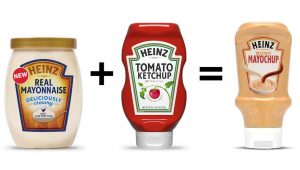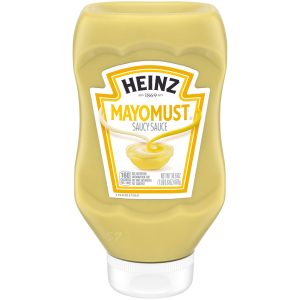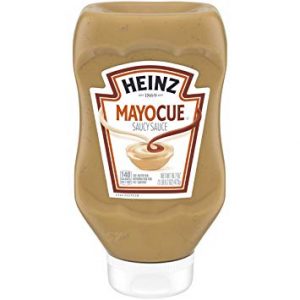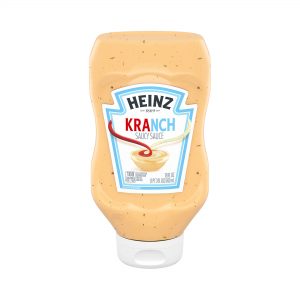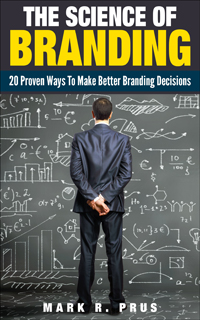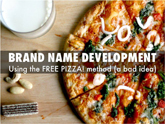News
The Ham Fighters
Every year I do a blog post on the interesting names of minor league baseball teams. How can you not love team names such as the Modesto Nuts (the A League affiliate of the Colorado Rockies) or the Montgomery Biscuits (the AA affiliate of the Tampa Bay Rays)?
This year I expanded my search globally and discovered baseball team names in Japan.
And I found the Hokkaido Nippon Ham Fighters. The idea of hams fighting was very intriguing – I mean what would their team logo design be?

Copyright Emily Wallace (http://eewallace.com/about) from the article https://www.southernfoodways.org/ham-to-ham-combat-the-tale-of-two-smithfields/
But as I researched the name I discovered it was named after Nippon Ham, a major Japanese food processing company.
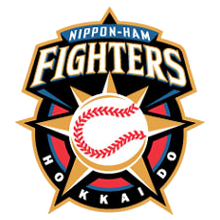
By Source, Fair use, https://en.wikipedia.org/w/index.php?curid=36847341
In Japan, professional baseball teams aren’t known by the city, as in the United States (e.g., New York Yankees). They carry the names of the companies that own them. So the official name is:
• Hokkaido – the northernmost of Japan’s main islands
• Nippon-Ham – the corporate owner
• Fighters – the team nickname
As an aside, the “Fighters” nickname came from a naming contest. A female high school student submitted the winning name, arguing that one of the team’s best players had guts and therefore was a “fighter.”
Other team names in the Nippon Professional Baseball league include:
• Tokyo Yakult Swallows – Yakult is a probiotic drink
• Fukuoka SoftBank Hawks – SoftBank is a telecommunications company
• Tohoku Rakuten Golden Eagles – Rakuten, Inc. is an online retailing company
If you want to see how baseball team names have evolved in Japan, check out this team name history project on Reddit: https://www.reddit.com/r/NPB/comments/4ffsa2/npb_team_name_history_project/
Could this naming format work in the US? Not really, as most Major League Baseball Teams in the US are owned by billionaires, not companies. Face it, the John Henry Red Sox or Hal Steinbrenner Yankees doesn’t have the same feeling as the Boston Red Sox or the New York Yankees.
Branding Fail or Marketing Fail?
In 2013, Burger King decided to take on McDonald’s famous French fries by launching a healthier alternative…Satisfries®. The Burger King fries were cooked in a less porous batter which resulted in less oil absorbed. This enabled Burger King to claim that Satisfries were healthier because they contained 40% less fat and 30% less calories than traditional french fries.
Satisfies were more expensive than regular french fries, costing $1.89 per serving versus $1.59. Yes, it is customary for healthier items to cost more than regular items, so perhaps the higher price was expected.
Nevertheless, the product failed and was gone in less than a year. What went wrong? Was this a branding fail or a marketing fail?
As a branding expert, I first look to the name. Is Satisfries a good name or a bad name? Personally, I like the name because it combines the idea of satisfies and fries, and for me French fries are very satisfying! If the product actually delivered on a more satisfying taste, then perhaps it would have been a good name.
But from a marketing perspective, I am not sure that the name makes sense for this product. The product had a “healthier” positioning, and taste was not the focus. Pricing, while consistent for healthier items, was nearly 20% higher.
My conclusion is Satisfries is a good name in search of a good product. Apparently, Burger King agrees as they have maintained the Satisfries trademark. Maybe someday we will get French fries that live up to the name Satisfries!
Are Pseudo-Brands Really Brands?
One of these things is not like the other. Actually, quite a few of them are very different. But all of them claim to be “brands.” I know this because they are names of various things being sold on Amazon and yes, these names are registered in the US Trademark Office.
Illustration by The New York Times
But are they really “brands?”
Welcome to the world of “Pseudo-Brands.” You see, Amazon likes products that are branded. And some manufacturers do not want to put any effort into developing a brand name that has meaning. This is how you end up with a name like MAJCF for winter gloves. The manufacturer needs to get a name through the US Trademark Office and the easiest way to do that is to make the name non-sensical (so there are no potential trademark conflicts).
A recent New York Times article exposed this new wave of “branding.” Here is the article:
https://www.nytimes.com/2020/02/11/style/amazon-trademark-copyright.html
Of course, as a professional name developer, this is an affront to my core beliefs. Yes, there is extra effort in developing a great brand name that communicates meaning, and yes getting it through the US Trademark Office is often difficult. If it were easy nobody would hire me! But I can assure you, developing a real brand name is always worth it!
Pseudo-Brands only confuse. Real brands matter! Invest in your future and develop a real brand!
Brandless Is Dead – Long Live Brands!
About two and a half years ago, Brandless was launched. The company sold “unbranded” household, personal care, baby, and pet products on the cheap and was viewed as a breakthrough in the “anti-branding” movement.
[Photo: John Sciulli/Getty Images for Brandless]
At the time it launched, I got a lot of flack from “anti-branders” who claimed that Brandless would be the downfall of traditional brands. Who needs to pay the middleman and the marketer in order to buy decent products? Who needs to invest in a brand name?
Allow me to repeat what I said back then: “BRANDS MATTER.”
The Brandless website attributes the failure to the crowded e-commerce market: “While the Brandless team set a new bar for the types of products consumers deserve and at prices they expect, the fiercely competitive direct-to-consumer market has proven unsustainable for our current business model.”
Allow me to rephrase this. Brandless failed to demonstrate proper value to consumers of their products. This is what a good brand can help do, but Brandless failed to establish itself as a quality brand that was worth trusting.
The irony is Brandless was actually a good brand name and a good business concept. However, they failed to recognize (or admit to) the power of the brand. The external validation of the concept is being delivered by competitors such as Public Goods who is doing a much better job of building a brand.
I’ll say it again…BRANDS MATTER!
Branding The Placebo Effect
For many years I’ve admired the positioning work behind the Nurofen brand of painkiller. They positioned the product as “targeted relief from pain” and had a wonderful demo that visually demonstrated how the product could target specific areas of pain.
Reckitt Benckiser had several products that addressed specific pain areas, including Nurofen Back Pain, Nurofen Period Pain, Nurofen Migraine Pain and Nurofen Tension Headache. Brilliant marketing…although it was not quite truthful.
You see, all the products contained exactly the same active ingredient in the exact same dosage. In fact, all that was different was a different package and label. And the active ingredient does not fly around and locate itself where the pain is…it works throughout the body.
The Australian Competition and Consumer Commission brought down the house of cards and levied a $6 million fine because the company “had profited substantially from misleading customers.”
Legally this was the right thing to do. But from a drug effectiveness standpoint, it probably was wrong. You see, the placebo effect in drugs is very high. Placebos cannot lower your cholesterol, but they can alter your perception of pain. For example, studies have shown that red pills relieve pain better than any other color. Imagine what the very specific positioning of these Nurofen products could do. Even with the same active ingredient and dose, the placebo effect ensures that your period pain would be better relieved by a specific product like Nurofen Period Pain rather than a generic ibuprofen.
I’m not suggesting that misleading consumers is a good idea. Rather, I’m acknowledging that the placebo effect exists and it can be used to imply effectiveness via very specific brand names (just please make something different in the product…not just a label!).
“That which we call a rose by any other name would smell as sweet.” William Shakespeare
Have you eaten Patagonian toothfish? Ewww, right? Well, if you have eaten Chilean sea bass you have eaten Patagonian toothfish. An American fish wholesaler changed the name to make it more palatable, even though the toothfish is not related to bass and most of the fish labeled as Chilean sea bass does not come from Chile!
There is a long history of rebranding fish to make it more palatable. Here are a few more examples:
Orange roughy was originally slimehead.
Monkfish was originally goosefish.
Sea urchin (Uni on your favorite sushi restaurant’s menu) was originally whore’s eggs.
Peekytoe crab was originally mud crab.
Fish wholesalers are not the only ones who change names to change perceptions. The drug industry has been doing this for years. Urinary incontinence became “light bladder leakage.” Impotence became erectile disfunction. Changing a name changes the perceptions of the disease.
Do you have something you need to rename? We can help!
XLERATOR®
Quick, how did you pronounce that name?
Here is the logo design on the product…does it help or hurt the pronunciation?
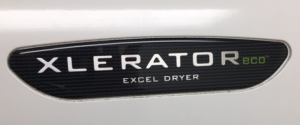
I won’t go into my thoughts on the name itself (i.e., is it a #GoodName or a #BadName?).
But I will make a point about how you can use logo design to encourage proper pronunciation of your name.
The way the name appears on the wall mounted hand dryer is block letters all connected: XLERATOR. If you try to pronounce it you will find the initial X to be difficult, and might end up calling the brand X-lerator. However, I’m almost certain the company wants you to pronounce it as “EXCELERATOR.”
One way to encourage proper pronunciation would be to space the brand name a bit…maybe go with XL ERATOR. Or perhaps you bold the XL and make it look like: XLERATOR. With some simple visual cues, the name becomes easier to pronounce.
I’m not a graphic designer but I’m sure a good one could name hundreds of other ways to encourage proper pronunciation. Developing a name is only one part of branding. Don’t forget the visual aspects of branding!
If You Have To Make A Video Explaining How To Pronounce Your Name, Is That A Good Name Or A Bad Name?
Porsche® announced its newest sports car which is an all-electric vehicle targeting Tesla buyers. The call it Taycan®. No, it’s not pronounced tay-can.
In fact, Porsche was so concerned about mis-pronunciation of the name it made a video about how to pronounce the name!
Tie-con it is!
It is a beautiful car, and I like the story behind the name. It’s not for everyone of course ($150,000+) but Porsche cars have never been mass market items.
According to Porsche, the name Taycan roughly translates from Turkish as “lively young horse” in reference to the historical Porsche crest and the exciting future of a new breed of sports car.
Of course, if you can’t properly pronounce Taycan, you are probably pronouncing Porsche wrong too…fortunately Porsche made a video about that as well:
Another Fail in International Branding
Yes folks, they actually call themselves Jen Italia.
This is a curious name because there is no “j” in the Italian language…it is used only for foreign words. Yet, this Italian footwear store chose a name that references sex organs. Go figure.
I’m guessing that the founders were oblivious to the way the name would be pronounced in English, or they were aware and decided to be controversial. Nevertheless, I count this one as a branding fail.
People who name companies, products or services really need to check out international communication of their names! FYI here is a firm that can help (Shout out to Dagmar Dolatschko!)
When Product Development Yields Portmanteau Names
port·man·teau
/ˌpôrtˈmantō/
noun
A word blending the sounds and combining the meanings of two others, for example motel (from ‘motor’ and ‘hotel’) or brunch (from ‘breakfast’ and ‘lunch’).
Sometimes portmanteau names can be great combinations that help communicate the concept behind the brand. Microsoft is a portmanteau of microcomputer and software. Groupon combines group and coupon. Instagram combines instant (camera) and telegram. These are fantastic combinations that subtly reveal the underlying brand positioning, which aids in the memorability of the brand name.
Sometimes portmanteau names are lazy combinations that just don’t work (see the POOLIFE combination in this post). https://nameflash.com/2018/08/the-perils-of-portmanteau-names/
And sometimes, portmanteau names are simply the result of clever product development ideas.
Heinz (Kraft Heinz Company: NASDAQ: KHC) is product development wizard as they regularly introduce new items to capture the imagination of condiment users. For example, a few years ago they introduced sriracha and jalapeño flavored ketchup. And they called them… sriracha and jalapeño flavored ketchup. Not exactly names that lend themselves to PR pickup.
But recently they launched another combo product…and called it MAYOCHUP.
Classic use of the portmanteau technique: MAYONNAISE + KETCHUP = MAYOCHUP. The internet exploded.
But Heinz did not stop there. Their product development pipeline kicked in other condiment combinations, yielding:
Heinz even reached into the pantry of Kraft to add barbecue sauce and ranch dressing:
Heinz has always had excellent product development ideas, but now they have discovered the portmanteau method of naming to reinforce the 1 + 1 = 2 product positioning behind the combination of condiments.
If Heinz had this formula when they were launching the sriracha flavored ketchup they might have called it SRIRACHUP. Now, unfortunately for Heinz, the name SRIRACHUP has already been trademarked by a competitor…but why not KETCHACHA?
What future combinations can we expect from the Kraft Heinz Company?
